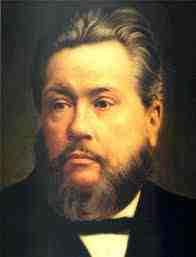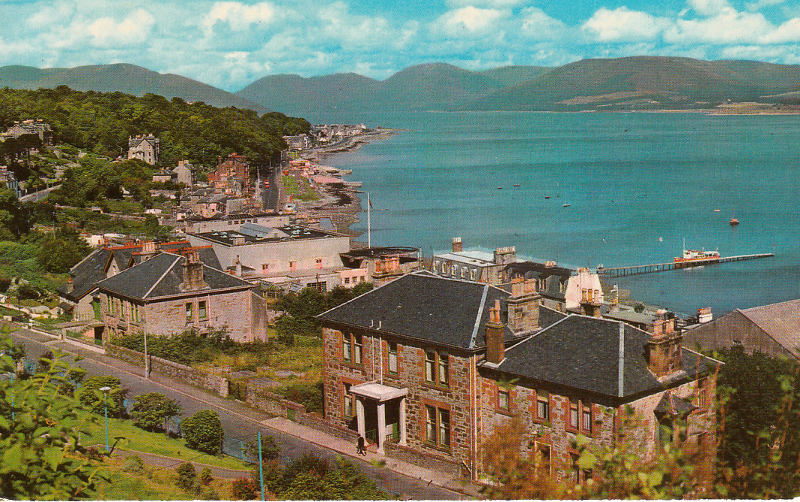
Charles Haddon Spurgeon (1834-1892) was the most popular preacher in Britain. His church in London, the Metropolitan Tabernacle, was normally filled to its 6,000-seat capacity. He was a compelling speaker, audible without any form of amplification to very large audiences. After every service, his sermon was published as a pamphlet, and was snapped up on the streets. Yet his speaking, and writing, were not “dumbed down” in any way; listening to him would have required considerable concentration, as well as a fair knowledge of the Bible. Nor are his sermons comfortable homilies; they challenged and confronted his hearers.
Spurgeon was an enthusiast who drove himself to the utmost. His health was never good, and his liking for cigars did not help. During the 1870s, when he was at the height of his powers, and his health threatened by the endless work, he was persuaded to take a summer break each year. For a number of years he spent two or three weeks at Benmore, near Dunoon, with his friend James Duncan. Even here however, he would not rest completely, but would preach in the locality.
In 1878, he decided that Rothesay would be the venue for his service that year, and, as a Baptist, he contacted Rev. Samuel Crabb, the pastor of Ardbeg Baptist Church, to make the arrangements. News of the planned visit soon got out. Serious thought was given to where a large gathering could take place. In the end it was decided that the best place would be the sloping ground below the then Rothesay Academy and the slopes of Chapelhill. The service was set for 21st July, but Spurgeon was obliged due to ill health to postpone his visit to Scotland. However, on the 25th July he sent a telegram to Mr Crabb saying that despite not being fully recovered, he would preach at Rothesay on the following Sunday at 6 pm.
As the event drew near thousands made their way to Bute. Every hotel and boarding house must have been full that weekend, every steamer packed,and extra sailings laid on. The Bay was filled with boats large and small which had brought more visitors. On Saturday evening Spurgeon himself came to Rothesay on Mr Duncan’s steam yacht. The Buteman (3 August 1878) reported that, “He was ashore for some time in the evening, and on embarking again he was heartily cheered by a crowd which had collected on the pier.” By Sunday morning the population of Rothesay must have swollen to several times its usual size. And still more people came. Spurgeon himself arrived again on Mr Duncan’s yacht and went to Ardbeg Baptist Church to attend the morning service. The church was no doubt packed, with many more outside.

By the afternoon people were heading for the site of the service. A makeshift pulpit was built on top of the portico of a house which faced the slopes where the congregation was to gather. Shortly before four o’clock the gates were opened, and the crowds flowed in, the first in rushing for the few benches which were available, the rest seating themselves on the ground. Chapelhill was also covered and the road in front of the area completely blocked. “Still they came,” reported The Buteman, “crowding in from east and west, and by half-past five there must have been something like 15,000 persons present.”

At 5.40 Spurgeon appeared, and commenced the service immediately. The Buteman captures the scene: “The service … was throughout most impressive, and those who were there are not likely to forget the scene – the far-stretching multitude of people, quiet and with hardly a movement, the red light of the sunset shining on their faces, the clear sky, the big burly form of the preacher, with his bell-like voice ringing out in the quiet night.” After a prayer came singing of the 63rd Paraphrase: How great the love the Father has/ so graciously bestowed, …” (from 1 John 3:1-3). Now Mr Spurgeon read a passage from Matthew, Chapter 11, and explained it. “At this stage,” reports The Buteman, “a well dressed individual had to be removed in consequence of his annoying interruptions to the service.” Spurgeon went on to preach on Luke, 13: 10-17, the story of the sick woman who touches the hem of Christ’s garment and is healed.
After the service, Spurgeon rested for a while in the garden of the house, to allow the crowds, estimated at between 15,000 and 20,000, to disperse. Then he made for Mr Duncan’s yacht. The crowds had gathered in thousands along the seafront, and as Spurgeon was rowed out to the yacht, all took out white handkerchiefs to wave as he departed. According to his biographer W. Y. Fullerton, “That was Scotland’s way of bidding a Sabbath adieu to the great and good man she loved so well; and not until he was on board the yacht did the farewell signals cease to flutter in the evening breeze.”
